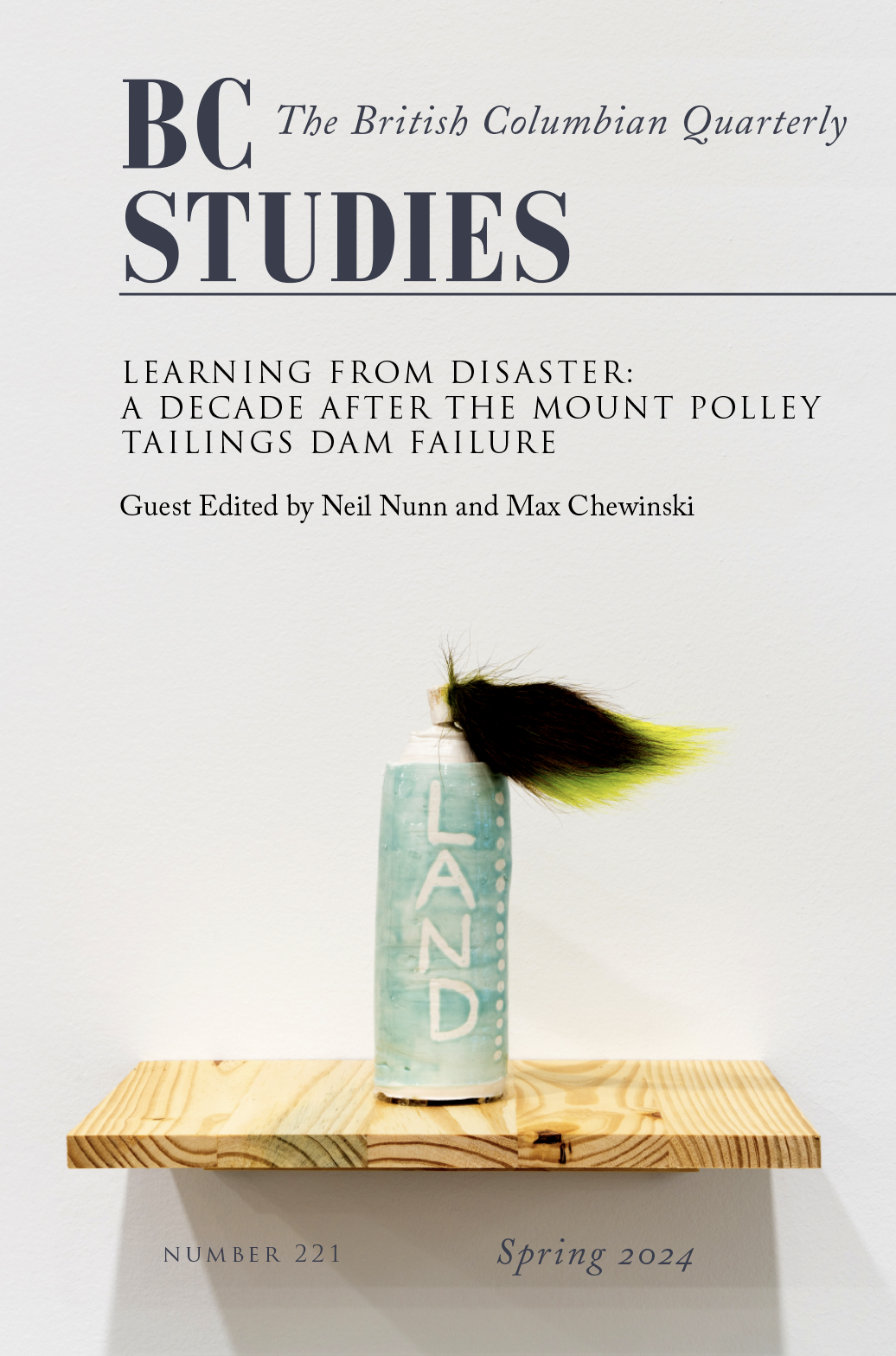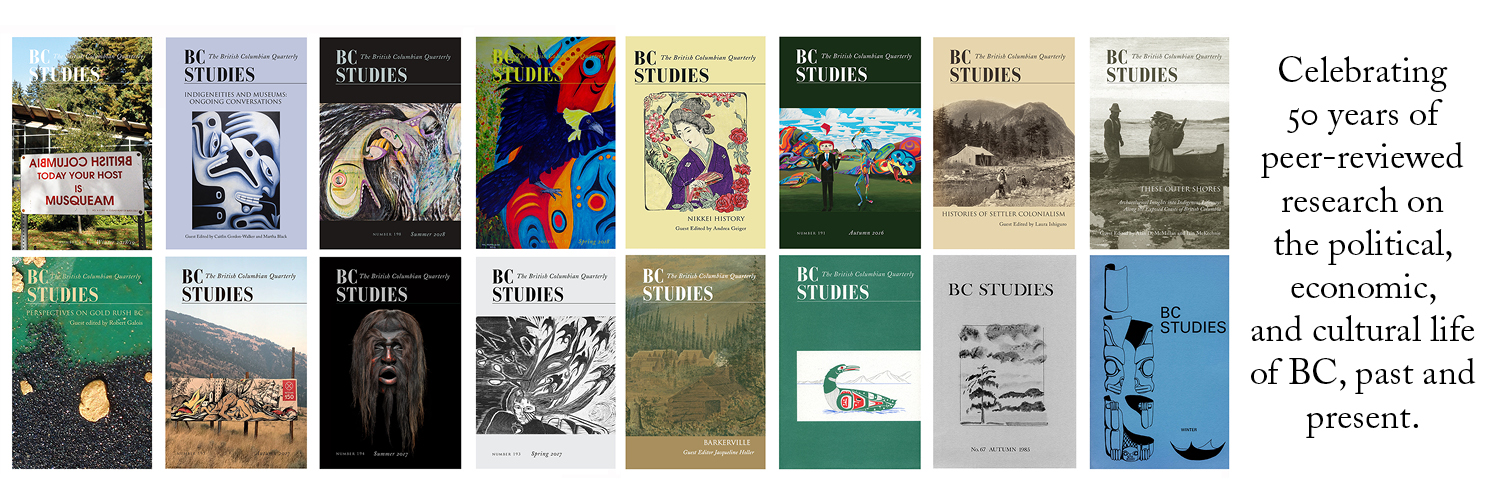The ‘Wasting’ Resource
The History of Mine Tailings Disposal in British Columbia, 1892–1982
DOI:
https://doi.org/10.14288/bcs.no221.198589Keywords:
mining, Mount Polley Mine, geography, pollution control, settler colonialism, disaster responseAbstract
The 2014 Mount Polley tailings spill is often characterized as an “accident” or “failure” related to tailings impoundment construction, maintenance, and regulation. This paper contextualizes this event in the history of tailings management and mining pollution in British Columbia and, in so doing, troubles this framing of “failure.” Drawing on “discard studies” theory, we suggest that this episode reveals the deeper logics of pollution, wasting, and containment that have long characterized the permissive provincial regulatory regime around tailings. Before the 1960s, the disposal of mine wastes was virtually unregulated in B.C.; in fact, local waterways were largely regarded by the industry as ideal for tailings disposal and removal. The rapid postwar expansion of mining collided with rising environmental consciousness in a series of controversies in the 1960s that resulted in a technoscientific rationalization, rather than outright restriction, of the industry’s use of waterways for waste disposal. Guided by the principle of “assimilative capacity,” provincial regulators focused efforts on regulating the volume and quality of tailings and effluent discharges to natural receiving waters. In spite of expanding environmental regulation since the 1970s, this paper argues, the fundamental principle of permitting access to land and water for waste disposal remained intact. This access, largely uncompensated, lightly regulated, and with little reference to pre-existing land relations is rooted in the what Max Liboiron and Traci Brynne Voyles argue is a colonialist appropriation of Indigenous land as a “resource” for literal and metaphorical accumulation. The Mount Polley disaster—and the existence of other massive tailings impoundments in B.C.—reflects the persistence of these powerful, yet flawed ideologies of waste and containment that not only work to support industrial capitalist access to land and water, but also create the conditions for both everyday pollution and disastrous “failures.”



